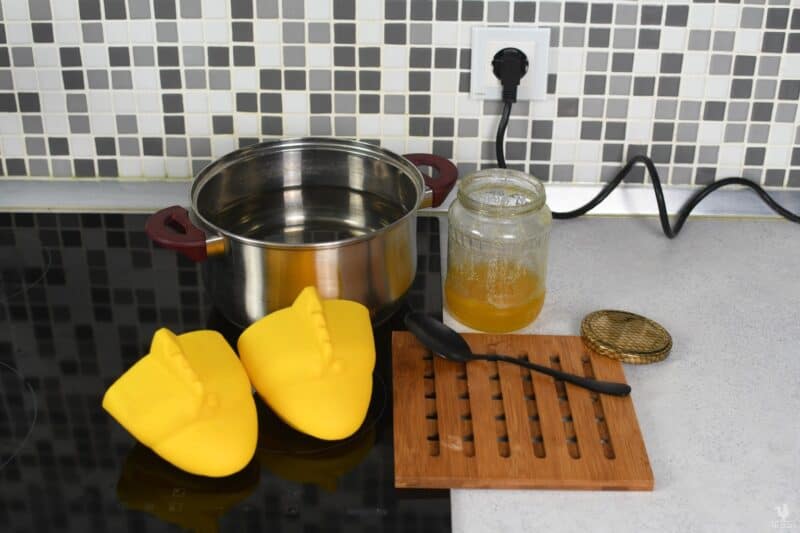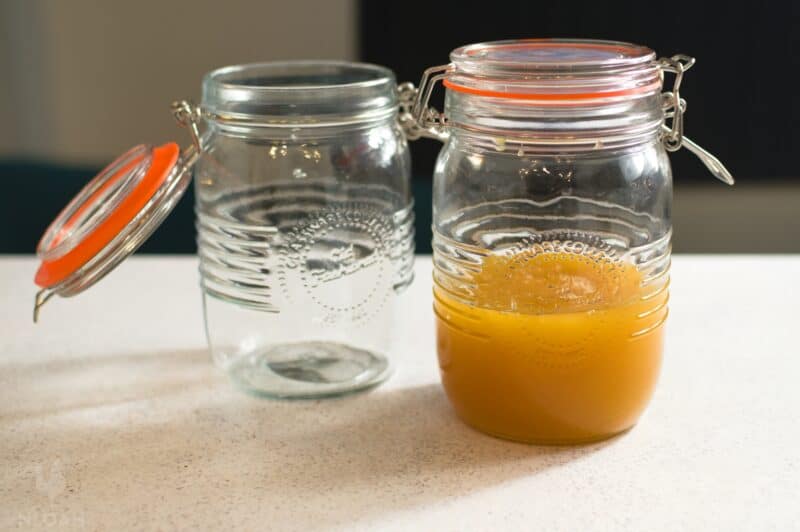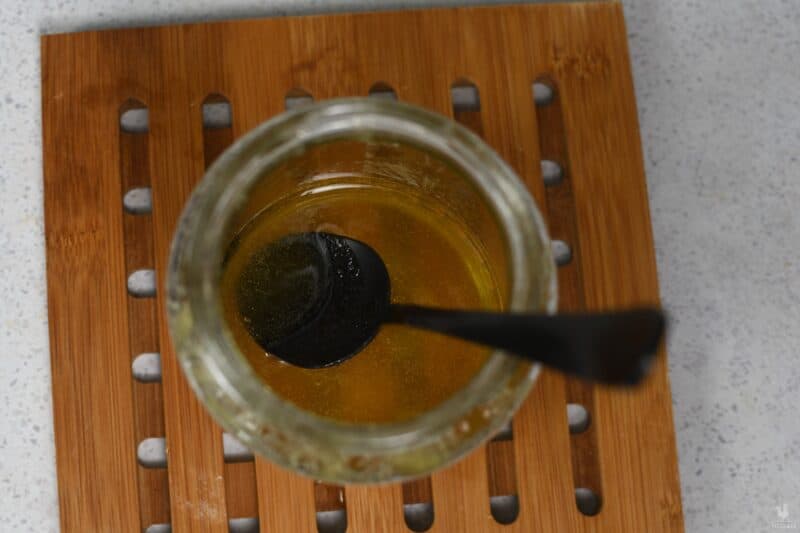There’s hardly anything more delicious and more wholesome than honey. Incredibly sweet, smooth, and supremely versatile in all sorts of recipes, and as a topping, honey is just the best. It also lasts a very long time, making it a great pantry staple.

However, give it a long enough timetable honey will crystallize, turning chunky, cloudy, and totally unlike its usual velvety, syrupy texture. Why does this happen? Why does honey crystallize and how can you stop it?
Honey crystallizes due to the glucose it contains binding with moisture, resulting in a cloudy or opaque appearance and chunky texture. Using a proper container and storing it properly can prevent or slow crystallization.
The good news is that crystallization is entirely normal for honey, and even when it is stored in ideal conditions it is still likely that it will occur in time. Even better news is that it isn’t harmful, and the process is reversible, to a point.
So, if your favorite batch has gone a little chunky there’s no need to panic. I’ll tell you all about it in the rest of this article…
Does All Honey Crystallize?
Yes, or at least all real honey will crystallize in time. Crystallization is a natural consequence of what honey is and what it contains.
If you have fake honey or some honey-colored industrially produced syrup that was cranked out in a factory, it won’t crystallize!
Is Crystallization a Sign of Poor Quality or Spoilage?
No, not at all. Crystallization is neither a sign of poor overall quality nor a sign of spoilage, contrary to some assertions. As mentioned above, crystallization is a surefire sign that you’re dealing with real-deal, actual honey, so that’s good.
Furthermore, even the very best and highest quality honey, from any source, will crystallize, but that doesn’t mean that it is spoiled or unsafe to eat.
Do Different Flower Sources Make Honey More or Less Prone to Crystallization?
Yes, surprisingly! The type or source of honey makes a big difference in how prone it is to crystallization.
Bees can source nectar for their honey from one or multiple sources, and different nectars or different combinations of nectars produce a resulting honey that is more prone to crystallizing or that will crystallize more quickly or more slowly.
Common clover and canola honeys tend to crystallize relatively quickly, even though they can take still several months in ideal storage. Some kinds of honey, namely eucalyptus honey, might go for years on end without crystallizing!
If you have a choice and are buying from a knowledgeable beekeeper, it could be worth asking which variety is more or less prone to crystallizing depending on your preferences and purposes.
A longer-lasting variety is ideal for long-term storage, obviously, assuming that you like the taste!

Is Crystallized Honey Still Safe to Eat?
Yes, it is. Crystallized honey is still completely safe to eat as it is and it will taste basically identical aside from the textural characteristic. That can definitely ruin the fun for some folks like me who love that golden liquid, but it’s good to know that it won’t go to waste.
Here’s How to Keep Your Honey from Crystallizing
It’s annoying when your honey crystallizes, and given enough time, it almost always will. Luckily, you can greatly extend its useful, liquid shelf life with the following tips.
Use a Glass Container
Keep your honey in a glass container. That’s it, really. Plastic containers, aside from potentially leaching weird nonsense in your honey that you definitely don’t want to be eating, promote crystallization.
If you purchase honey in a plastic container of any kind, decant it into a good glass jar with an airtight lid or stopper.
The other shortcoming of plastic is that it makes it difficult or dangerous to decrystallize the honey when it does occur. I’ll tell you more about that in a minute.
Keep it in the Dark
Make it a point to keep your honey in the dark, whatever kind it is and however much you have. Direct sunlight increases temperature and, when temps get too high, condensation is more likely, as is direct damage to the honey.
This will promote faster crystallization but also hurt the quality. You’ll notice it doesn’t taste quite as sweet or that it starts to separate unpleasantly.
It’s okay to pull out your jar of honey and leave it on the counter while you’re using it, but you want to keep it away from direct sunlight at all other times – and also keep it away from intense heat sources.
Don’t Let it Chill
Excess heat is bad for honey, but you definitely don’t want to chill it. Chilling honey, even in the refrigerator, will promote very rapid crystallization, and at the very least it will turn cloudy in short order.
Although it’s technically possible to extend the strict shelf life of honey by refrigerating it or freezing it, I think this is a terrible trade-off concerning its quality and usability.
The best place to keep your honey is simply in a warm pantry or cabinet in your home. This will keep it in the dark, and if your home is at a comfortable temperature for you (50°F to 70°F or 10 °C to 21 °C is ideal)it should be just right for the honey.

You Can Decrystallize Cloudy or Chunky Honey with a Little Warm Water
So, the inevitable has occurred and your honey has gotten chunky, gritty and opaque. Bummer!
But don’t panic: we can turn it right again in less than an hour with the right approach. All you need to do is get a glass container (if the honey isn’t already in one) and a bowl that is deep enough for you to partially submerge it in.
Fill the bowl with very warm- but not boiling! – water, remove the lid or crack the seal on the container, and then carefully immerse the jar in the water. Every 5 minutes or so, thoroughly stir the honey with a clean spoon or other utensil.
Depending on the quantity, it will take anywhere from 20 to 40 minutes for your honey to return to its crystal-clear liquid state.
Note: Only Decrystallize the Honey You are Prepared to Eat
Concerning the decrystallization process, it’s in your best interest to scoop out only the amount of honey you need for your purpose, whether topping, snacking, or using in a recipe.
It is possible to decrystallize an entire jar, and do so repeatedly when it happens again, but this will start to negatively impact the flavor and texture. As a rule of thumb, I try to avoid decrystallizing a whole jar of honey more than once.
Tom has lived and worked on farms and homesteads from the Carolinas to Kentucky and beyond. He is passionate about helping people prepare for tough times by embracing lifestyles of self-sufficiency.
